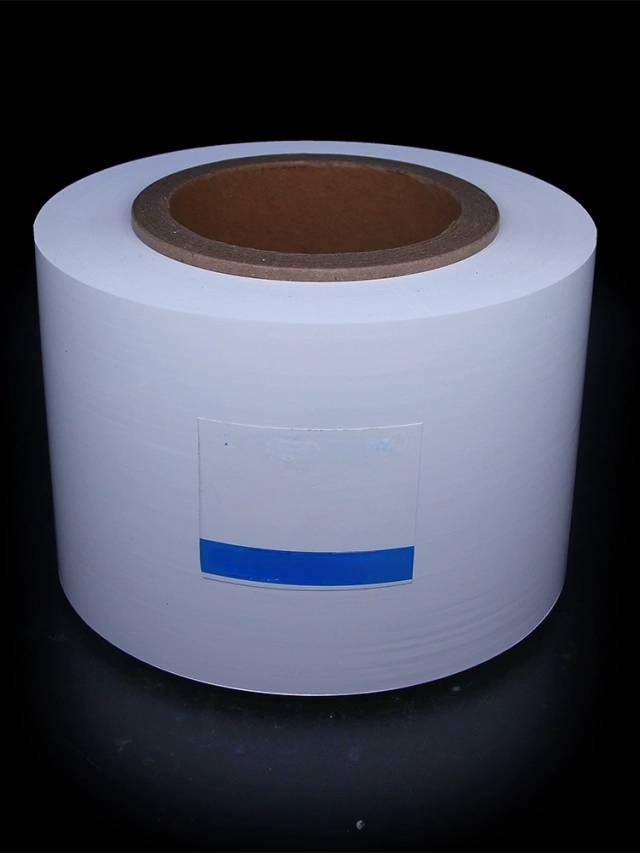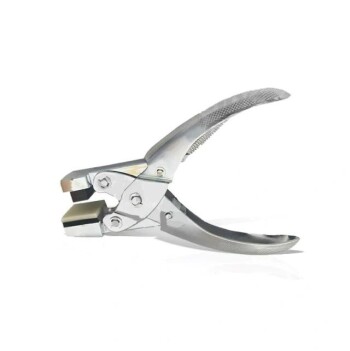
مادة البطارية
فاصل البولي إيثيلين لبطارية الليثيوم
رقم العنصر : BC-18
السعر يتغير بناءً على المواصفات والتخصيصات
الشحن:
اتصل بنا للحصول على تفاصيل الشحن استمتع ضمان التسليم في الموعد المحدد.
لماذا تختارنا
شريك موثوقعملية طلب سهلة، منتجات عالية الجودة، ودعم مخصص لنجاح عملك.
مقدمة
يتم إنتاج فواصل البولي إيثيلين باستخدام طرق التمدد الرطب والجاف، مما يوفر المرونة وخيارات مواد متنوعة لتطبيقات مختلفة. تختلف مقاومة الحرارة لـ PE و PP، حيث تتمتع PE بمقاومة أقل و PP بمقاومة أعلى. تتمتع PP أيضًا بكثافة أقل ونقطة انصهار أعلى مقارنة بـ PE. تختلف قوة الفاصل باختلاف طريقة الإنتاج، حيث ينتج التمدد ثنائي المحور الرطب قوة طولية وعرضية فائقة. حساسية PE للضغط المحيط هي اعتبار في تطبيقات معينة، مما يؤثر على الأداء والملاءمة في صناعات مختلفة.
فاصل البولي إيثيلين هو مكون رئيسي في بطاريات أيون الليثيوم، ويقع بين الأقطاب الموجبة والسالبة. يسمح بمرور أيونات الليثيوم مع منع نقل الإلكترونات. يؤثر أداء الفاصل على سعة البطارية ودورتها وسلامتها، وبالتالي فهو أمر بالغ الأهمية للأداء العام للبطارية.
التفاصيل والأجزاء





المواصفات الفنية
| المادة: | فيلم PE أحادي الطبقة SK |
| السماكة: | 16 ميكرومتر |
| العرض: | 115 ملم |
| نفاذية الهواء: | 200 ثانية |
| المسامية: | 44% |
| معدل انكماش الحرارة: | رأسي 3% أفقي 1% |
| قوة الشد: | رأسي 1200 كجمف/سم2 أفقي 1200 كجمف/سم2 |
| ظروف التخزين: | أفضل درجة حرارة بيئة التخزين هي 25±3 درجة مئوية، والرطوبة هي 30%-70%، مقاومة للرطوبة |
المنتجات التي نعرضها متوفرة بأحجام مختلفة ومتوفرة أحجام مخصصة عند الطلب.
مزايا
- مقاومة كيميائية: تظهر فواصل البولي إيثيلين مقاومة ممتازة للأحماض والقلويات ومعظم المواد الكيميائية.
- بنية مسامية متسقة: يحافظ الفاصل على بنية مسامية متسقة مع استقرار كيميائي وحراري عالي.
- تعدد الاستخدامات: متوفرة في أنواع مختلفة من البطاريات، مما يجعلها مناسبة لتطبيقات مختلفة.
- مقاومة الأكسدة: يتمتع فاصل البولي إيثيلين بمقاومة ممتازة للأكسدة، مما يضمن أداءً ممتازًا للدورة والشحن العائم.
- انكماش جانبي "صفر": يقلل الانكماش العرضي "صفر" للفاصل من الدوائر القصيرة الداخلية ويعزز السلامة الأبعاد في درجات الحرارة العالية.
FAQ
ما هي الاعتبارات التي يجب مراعاتها فيما يتعلق بحشيات علبة البطارية؟
ما هو دور جوانات حالة البطارية؟
ما هي حالات بطارية الليثيوم الهواء؟
كيف ينبغي اختيار حالات بطارية الأزرار لتطبيقات محددة؟
4.8
out of
5
The delivery was incredibly fast, arriving within a few days of placing the order. The quality of the separator is exceptional and has significantly improved the performance of our lithium-ion batteries.
4.7
out of
5
The polyethylene separator has proven to be an excellent investment. It has extended the lifespan and efficiency of our batteries, making them more reliable and cost-effective.
4.9
out of
5
The separator's lateral 'zero' shrinkage feature is a game-changer. It has greatly reduced the risk of internal short circuits, enhancing the safety and stability of our batteries.
4.6
out of
5
The polyethylene separator's high chemical and thermal stability has been impressive. It has maintained its integrity even under extreme conditions, ensuring consistent performance and longevity.
4.8
out of
5
The separator's consistent pore structure has significantly improved the capacity and cycle life of our batteries. We've witnessed a noticeable increase in energy storage and reduced degradation over time.
4.9
out of
5
The versatility of the polyethylene separator is commendable. Its compatibility with various battery types has made it an indispensable component in our research and development initiatives.
4.7
out of
5
The excellent oxidation resistance of the separator has been instrumental in enhancing the cycle and trickle charge performance of our batteries. It has resulted in improved durability and reliability.
4.8
out of
5
The polyethylene separator's chemical resistance has been remarkable. It has shown exceptional resilience against acids, alkalis, and most chemicals, ensuring long-term stability and performance.
4.6
out of
5
The separator's lateral 'zero' shrinkage feature has been a lifesaver. It has eliminated internal short circuits and maintained dimensional integrity at high temperatures, significantly improving the safety and reliability of our batteries.
4.9
out of
5
The polyethylene separator's exceptional quality has exceeded our expectations. It has enhanced the cycle life and capacity of our batteries, leading to improved performance and extended lifespan.
4.7
out of
5
The separator's consistent pore structure has been a game-changer for our research. It has enabled us to achieve higher energy densities and improved rate capabilities, pushing the boundaries of battery technology.
4.8
out of
5
The versatility of the polyethylene separator has been a boon to our diverse battery applications. Its compatibility with different battery types has allowed us to streamline our manufacturing processes and improve efficiency.
4.6
out of
5
The separator's excellent oxidation resistance has been crucial in extending the lifespan of our batteries. It has minimized capacity fade and maintained high performance over extended periods.
4.9
out of
5
The polyethylene separator's chemical resistance has been a lifesaver in our harsh operating conditions. It has withstood exposure to corrosive chemicals and extreme temperatures, ensuring uninterrupted performance.
4.7
out of
5
The separator's lateral 'zero' shrinkage feature has been a major breakthrough for our battery safety. It has eliminated internal short circuits and thermal runaway risks, making our batteries safer and more reliable.
4.8
out of
5
The polyethylene separator's high-temperature resistance has been a game-changer for our high-power applications. It has enabled us to push the limits of battery performance without compromising safety and reliability.
4.6
out of
5
The separator's exceptional quality has been a major factor in our successful battery development. It has consistently delivered high performance and reliability, making it an indispensable component in our cutting-edge battery systems.
4.9
out of
5
The polyethylene separator's consistent pore structure has been a major breakthrough for our research. It has enabled us to achieve unprecedented levels of energy density and cycle life, pushing the boundaries of battery technology.
4.7
out of
5
The separator's versatility has been a major advantage for our diverse battery applications. Its compatibility with different battery chemistries and configurations has allowed us to streamline our manufacturing processes and reduce costs.
اطلب اقتباس
سيقوم فريقنا المحترف بالرد عليك في غضون يوم عمل واحد. لا تتردد في الاتصال بنا!
المنتجات ذات الصلة

صندوق تخزين بطاريات الأزرار لبطارية المختبر
صندوق تخزين بطاريات من نوع الزر، قابل للفصل، مادة حماية بيئية عالية الجودة من البولي بروبلين؛ مناسب للأشياء الصغيرة/المواد الكيميائية، إلخ، سميك، مقاوم للضغط، متين، ومتوفر في مجموعة متنوعة من الأساليب.

علبة فولاذية للبطارية الأسطوانية لمختبر البطاريات
يمنع غلاف بطارية الليثيوم أيون استقطاب البطارية، ويقلل من التأثيرات الحرارية، ويحسن أداء المعدل.

معدات مختبر البطاريات، جهاز اختبار سعة البطارية والاختبار الشامل
نطاق تطبيق جهاز اختبار البطارية الشامل يمكن اختباره: 18650 والبطاريات الليثيوم الأسطوانية والمربعة الأخرى، بطاريات البوليمر، بطاريات النيكل والكادميوم، بطاريات النيكل ميتال هيدريد، بطاريات الرصاص الحمضية، إلخ.

ألسنة من النيكل والألومنيوم لبطاريات الليثيوم ذات العبوات اللينة
تُستخدم ألسنة النيكل لتصنيع البطاريات الأسطوانية والجيوب، ويُستخدم الألومنيوم الموجب والنيكل السالب لإنتاج بطاريات الليثيوم أيون والنيكل.

فرن أنبوب دوار مقسم متعدد مناطق التسخين
فرن دوار متعدد المناطق للتحكم الدقيق في درجة الحرارة مع 2-8 مناطق تسخين مستقلة. مثالي لمواد أقطاب بطاريات الليثيوم أيون والتفاعلات ذات درجات الحرارة العالية. يمكن العمل تحت التفريغ والجو المتحكم فيه.

قالب ختم مكبس أقراص البطارية الزرية للاستخدام المخبري
يعد قالب الختم ضروريًا لتجميع البطاريات الزرية، مما يضمن إحكام غلق المكونات مثل الأنود والكاثود والإلكتروليت.

قالب تفكيك وختم بطاريات الأزرار للاستخدام المخبري
يمكن استخدام قالب الختم والتفكيك البسيط مباشرة على مكابس الأقراص العادية، مما يوفر التكاليف، وهو مريح وسريع، ويمكن استخدامه لتغليف وتفكيك بطاريات الأزرار. يمكن تخصيص مواصفات أخرى.

فرن الجرافيت بالفراغ لمواد القطب السالب فرن الجرافيت
فرن الجرافيت لإنتاج البطاريات يتميز بدرجة حرارة موحدة واستهلاك منخفض للطاقة. فرن الجرافيت لمواد الأقطاب السالبة: حل جرافيت فعال لإنتاج البطاريات ووظائف متقدمة لتعزيز أداء البطارية.

أدوات قطع احترافية لورق الكربون، قماش الكربون، الحجاب الحاجز، رقائق النحاس والألومنيوم، والمزيد
أدوات احترافية لقطع صفائح الليثيوم، ورق الكربون، قماش الكربون، الفواصل، رقائق النحاس، رقائق الألومنيوم، إلخ، بأشكال دائرية ومربعة وبأحجام مختلفة للشفرات.

ورق كربون محب للماء TGPH060 لتطبيقات مختبر البطاريات
ورق الكربون من Toray هو منتج مركب مسامي من الكربون/الكربون (مادة مركبة من ألياف الكربون والكربون) خضع لمعالجة حرارية عالية الحرارة.

رقائق الزنك عالية النقاء لتطبيقات مختبرات البطاريات
يوجد عدد قليل جدًا من الشوائب الضارة في التركيب الكيميائي لرقائق الزنك، وسطح المنتج مستقيم وناعم؛ يتمتع بخصائص شاملة جيدة، وقابلية معالجة، وقابلية تلوين بالطلاء الكهربائي، ومقاومة للأكسدة والتآكل، وما إلى ذلك.

معدات مختبر البطاريات، شريط من الفولاذ المقاوم للصدأ 304، رقائق بسمك 20 ميكرومتر للاختبار
304 هو فولاذ مقاوم للصدأ متعدد الاستخدامات، يستخدم على نطاق واسع في إنتاج المعدات والأجزاء التي تتطلب أداءً شاملاً جيدًا (مقاومة التآكل وقابلية التشكيل).

حشية علبة بطارية زرية لتطبيقات معمل البطاريات
تمنع الحشية تشوه المادة الداخلية، وتساعد ورقة الزنبرك على الاتصال المحكم داخل البطارية لمنع الارتخاء.

علبة بطارية زرية لتطبيقات مختبر البطاريات
تُعرف بطاريات الأزرار أيضًا باسم البطاريات الدقيقة. تبدو مثل بطارية صغيرة على شكل زر. عادة ما تكون أكبر في القطر وأرق في السماكة.

فرن دوار كهربائي يعمل بشكل مستمر مصنع تحلل صغير فرن دوار تسخين
تكليس وتجفيف المواد السائبة والمواد السائلة المتكتلة بكفاءة باستخدام فرن دوار كهربائي مسخن. مثالي لمعالجة مواد بطاريات الليثيوم أيون والمزيد.

قالب التسخين الكهربائي الأسطواني للمختبر للتطبيقات المعملية
جهز العينات بكفاءة باستخدام قالب التسخين الكهربائي الأسطواني للمختبر. تسخين سريع، درجة حرارة عالية، تشغيل سهل. أحجام مخصصة متاحة. مثالي لأبحاث البطاريات والسيراميك والكيمياء الحيوية.

قالب ضغط مختبر مربع التجميع للتطبيقات المختبرية
احصل على تحضير عينات مثالي مع قالب ضغط مختبر مربع التجميع. يزيل التفكيك السريع تشوه العينة. مثالي للبطاريات والأسمنت والسيراميك والمزيد. تتوفر أحجام قابلة للتخصيص.
المقالات ذات الصلة

خطوات تشغيل آلة ختم البطارية والاحتياطات
مقدمة في خطوات التشغيل والاحتياطات الخاصة بآلة ختم البطارية

البطاريات الإلكتروليتية حل لمتطلبات الطاقة المتزايدة
لا يزال تصميم الإلكتروليتات يمثل تحديًا ، لكن الاكتشاف الآلي وقوة الذكاء الاصطناعي هي أدوات واعدة للتقدم في هذا المجال.

فهم مبادئ وتطبيقات الضغط المتوازن
في هذه العملية، يتم تعبئة المسحوق في قالب ويتم إغلاقه بإحكام. يحدث هذا خارج وعاء الضغط. بعد ملء القالب بالمسحوق، يتم غمر القالب في سائل الضغط داخل وعاء الضغط. ثم يتم تطبيق الضغط المتوازن على السطح الخارجي للقالب، مما يؤدي إلى ضغط المسحوق إلى كتلة صلبة.

تصميم وتطبيق الأقطاب الكهربائية المرجعية في بطاريات الليثيوم
تناقش هذه المقالة اختيار وتصميم الأقطاب الكهربائية المرجعية لبطاريات الليثيوم، مع التركيز على المواد النشطة مثل معدن الليثيوم وسبائك الليثيوم وأكاسيد الليثيوم المدمجة بالليثيوم.

مبدأ تصميم الأقطاب الكهربائية المرجعية لبطاريات الليثيوم وتطبيقها
يناقش مبادئ التصميم والأنواع والتطبيقات والتوجهات المستقبلية للأقطاب الكهربائية المرجعية في بطاريات الليثيوم.

طلاء الكربون لتعديل سطح المواد المستندة إلى السيليكون في بطاريات الليثيوم أيون
تناقش هذه المقالة تطبيق الطلاءات الكربونية لتحسين أداء مواد الأنود القائمة على السيليكون في بطاريات الليثيوم أيون.

فهم الضغط المتوازن: العملية والفوائد والقيود والتطبيقات
الكبس المتساوي الضغط هو عملية تصنيع توفر العديد من الفوائد والتطبيقات في مختلف الصناعات. وتتضمن تعريض المادة لضغط متساوٍ من جميع الاتجاهات لتحقيق كثافة وشكل موحدين. هذه الطريقة مفيدة بشكل خاص مقارنةً بتقنيات الإنتاج الأخرى.

الدليل الشامل للضغط المتوازن: الأنواع والعمليات والميزات(3)
الضغط المتوازن هو عملية تصنيع متعددة الاستخدامات تستخدم على نطاق واسع في مختلف الصناعات. إنها تنطوي على تعريض المادة لضغط متساوٍ من جميع الاتجاهات لتحقيق كثافة وشكل موحد. يوفر الضغط المتوازن العديد من المزايا، مثل القدرة على إنتاج أشكال معقدة، والتوحيد في خصائص المواد، والدقة العالية.

اختيار معدات الكبس الإيزوستاتيكي للقوالب عالية الكثافة
نظرة متعمقة على تقنيات الكبس المتساوي الضغط واختيار المعدات لتحقيق صب عالي الكثافة.

عمليات إنتاج قضبان سيراميك الزركونيا: الكبس المتوازن مقابل الكبس الجاف
مقارنة بين الكبس المتساوي الضغط والكبس الجاف في إنتاج قضبان سيراميك الزركونيا مع تسليط الضوء على الاختلافات والمزايا.

فهم عملية الكبس المتساوي الضغط وأنواعه
شهد الكبس المتساوي الضغط المتساوي الضغط، وهي تقنية تطبق الضغط الهيدروستاتيكي على مادة ما لتحسين كثافتها وقوتها الميكانيكية، نموًا وتطورًا كبيرًا على مر السنين. ويُستخدم الكبس المتساوي الضغط المتساوي الضغط بشكل شائع لتوحيد المساحيق ومعالجة عيوب المسبوكات، مما يجعلها عملية متعددة الاستخدامات لمجموعة من المواد بما في ذلك السيراميك والمعادن والمواد المركبة والبلاستيك والكربون.

تقنية الضغط المتوازن: المبادئ والتصنيف والتطبيقات
نظرة متعمقة على تقنية الكبس المتساوي الضغط وأنواعه وتطبيقاته المتنوعة في مختلف الصناعات.